15 Companion Plants for Hydrangeas (with Pictures)
-
Pete Ortiz
- Last updated:
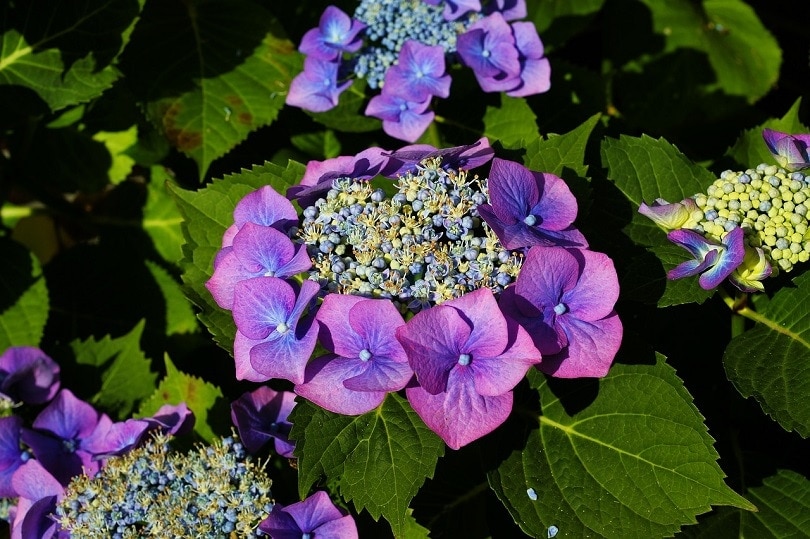
Hydrangeas are stunning plants that can increase your home’s curb appeal and add a splash of color to your garden. These lovely plants can grow in USDA Hardiness Regions from 3–11, making them a perfect flower option for any climate.
While these plants can prosper independently, they grow even better when they have a good companion. Because of that, it’s essential to know which plants make good companion plants for hydrangeas, which we’ll cover in this article.
Read on to learn more about suitable companion plants for hydrangeas and which plants you should keep away from your hydrangea garden.
The 15 Great Companion Plants for Hydrangeas
1. Heuchera

| USDA Hardiness Region: | 3–11 |
| Sun: | Full sun/partial shade |
| Soil: | Rich, well-draining |
The heuchera, also known as the “Coral Bell”, is a perennial plant native to North America. It’s famous for its lovely foliage that varies in color, ranging from red and purple to lime green and gold. These plants are excellent companions for hydrangeas as they prefer shaded environments. You can plant them in front of your hydrangeas, as their colors will enhance the curb appeal of your garden.
Heucheras are also excellent for attracting beneficial insects to your yard.
- They prefer similar environmental conditions as hydrangeas
- They attract beneficial insects
- Heucheras need a bit more sun than hydrangeas
2. Daylily
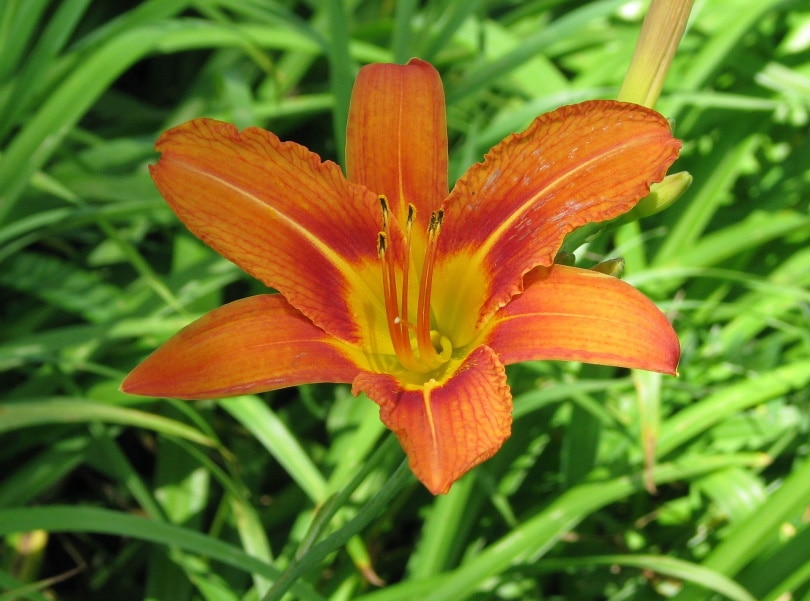
| USDA Hardiness Region: | 4–9 |
| Sun: | Full sun/partial shade |
| Soil: | Clay, sandy, well-draining |
The daylily is a beautiful perennial that makes an excellent companion plant for hydrangeas, as they will make your garden colorful and exotic. These plants have colorful flowers, ranging from white to deep red and orange, which will complement the hydrangeas’ colors, typically blue, green, pink, or white. While these plants typically need more sun than hydrangeas, they can easily adapt to part shade requirements of hydrangeas.
While daylilies seem delicate, they’re hardy and easy to grow, making them an excellent option for any garden.
- They can adapt to the partial shade requirements of hydrangeas
- Hardy
- Easy to grow
- They need more sun to prosper than hydrangeas
3. Azalea
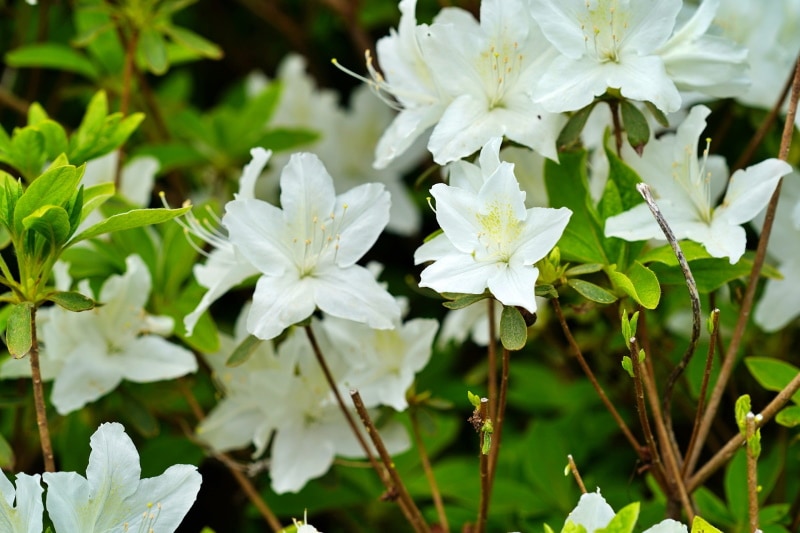
| USDA Hardiness Region: | 4–8 |
| Sun: | Full sun/partial shade |
| Soil: | Slightly acidic, well-draining, rich in organic matter |
Azaleas are stunning plants you can grow as evergreen plants or deciduous shrubs. They make excellent companion plants for hydrangeas as they prefer the same soil and have similar sun requirements. These plants bloom in spring, so combined with hydrangeas that bloom in summer, they will make your garden colorful throughout the year. Azaleas come in various colors, from pink and red to white and orange.
The only downside is that these plants need more space than other hydrangea companion plants.
- They prefer the same soil as hydrangeas
- They have similar sun requirements
- They need more space than other hydrangea companion plants
4. Plantain Lilies
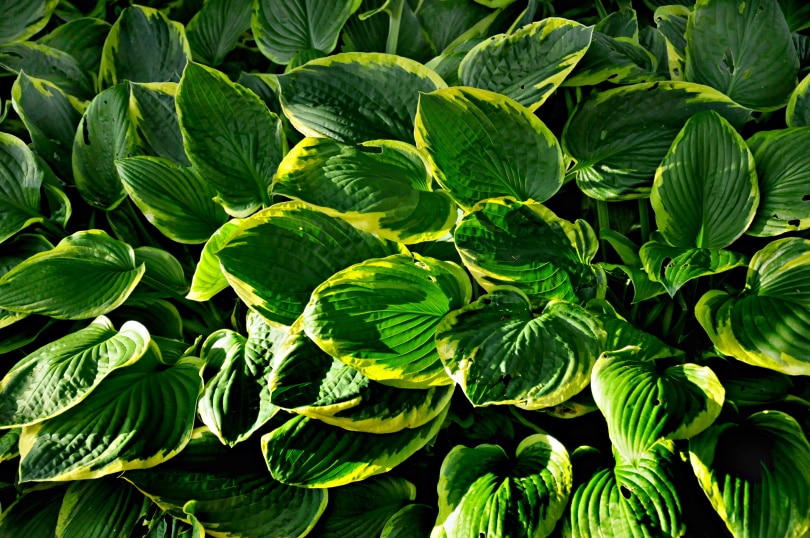
| USDA Hardiness Region: | 3–9 |
| Sun: | Partial shade |
| Soil: | Clay, moist, well-draining |
Plantain lilies, also known as Hostas, are plants native to Asia. They make good companion plants for hydrangeas as both plants like similar environmental conditions. Your plantain lilies should be in partial shade to thrive while they can get some morning sun, which also works for hydrangeas. These plants are also compatible because they look the best during the hydrangea blooming season. Both thrive in similar soil, although hostas might need flower beds for better growth.
- Both plants like similar environmental conditions
- Hostas look the best during the hydrangea blooming season
- They have similar soil needs
- Plantain lilies might need flower beds for better growth
5. Swedish Ivy

| USDA Hardiness Region: | 10–11 |
| Sun: | Full sun/partial shade |
| Soil: | Light, loamy, well-draining |
While people typically keep the Swedish ivy as a houseplant, it also makes an excellent space filler for other plants, including hydrangeas. Swedish ivy will keep the soil around your hydrangeas cool and moist, which will help them prosper. This plant is easy to take care of, and it grows beautiful white flowers almost all year round, which will enhance the look of your colorful hydrangeas. It prefers full sun to partial shade, similarly to hydrangeas, and can grow well without special care.
However, you should keep in mind that Swedish ivy does grow better indoors, and it may not reach its full glory outside.
- Swedish ivy will keep the soil around hydrangeas cold and moist
- It blooms all year round
- It prefers the same environmental conditions as hydrangeas
- Swedish ivy typically grows much better indoors
6. Gardenia
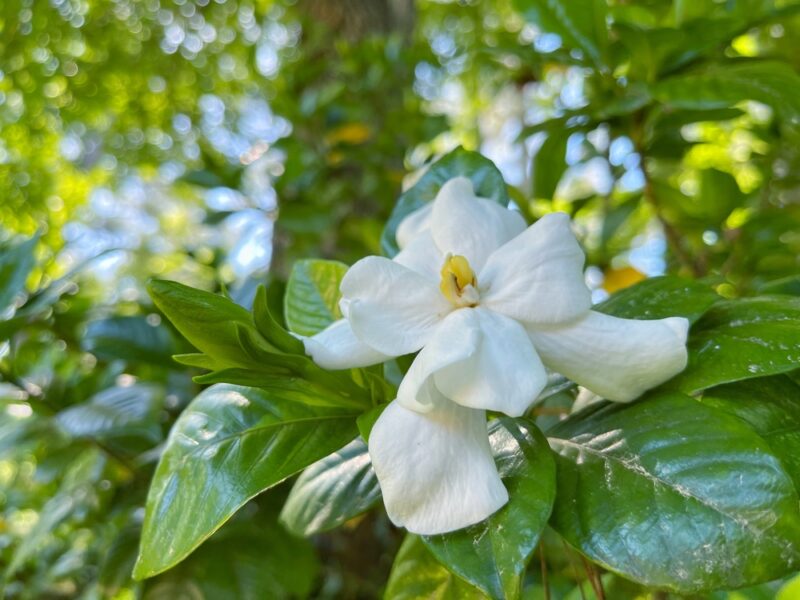
| USDA Hardiness Region: | 6–11 |
| Sun: | Full sun/partial shade |
| Soil: | Acidic, rich in organic matter, well-draining |
Gardenia is a tropical plant from the coffee family which can thrive outdoors in warmer climates. It produces white, delicate flowers which perfectly complement colorful hydrangeas and help them stand out. These plants like similar conditions, full sun to partial shade, along with well-draining, acidic, rich soil. While gardenias are an excellent companion plant for hydrangeas, you shouldn’t keep gardenias outside if you live in colder climates.
They need warm temperatures to prosper, so planting gardenias outside in USDA Hardiness Regions below 6 would endanger their growth.
- White gardenia flowers perfectly complement colorful hydrangeas
- They have similar soil and sun requirements
- You shouldn’t grow gardenias outside in USDA Hardiness Regions below 6
7. Dogwood
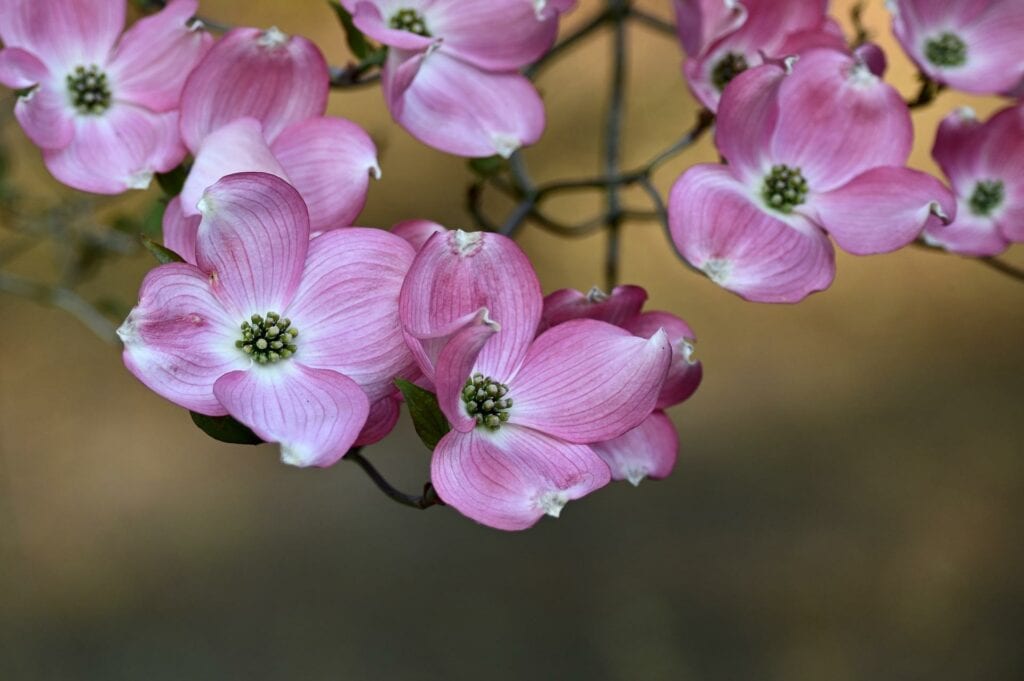
| USDA Hardiness Region: | 5–9 |
| Sun: | Full sun/partial shade |
| Soil: | Slightly acidic, fertile, sandy, loamy |
There are various dogwood species that would perfectly fit your hydrangeas, while the most popular is definitely the American Dogwood. They are native to America and are even considered state flowers and trees of some US states. Dogwoods prefer morning sun and afternoon shade like hydrangeas, while they can also be additional shade providers once they become high. Typically, dogwoods bloom between May and June, and their flowers range from white to pink, which will amplify the beauty of your hydrangeas.
The only downside to having these plants as companion plants is that dogwoods are more susceptible to diseases. Because of that, they might endanger your hydrangeas.
- Dogwoods like similar conditions as hydrangeas
- They can be additional shade providers
- White and pink flowers from dogwood will amplify the looks of your hydrangeas
- Dogwoods are prone to diseases that could endanger your hydrangea plants
8. Campanulas

| USDA Hardiness Region: | 3–11 |
| Sun: | Full sun/partial shade |
| Soil: | Moist, well-draining, acidic |
Campanulas, also known as bellflowers, are popular perennial plants grown in many gardens. They prefer full sun or partial shade, making them a great companion for hydrangeas. These plants need well-draining, acidic soil like hydrangeas, and they produce beautiful flowers. Typically, the flowers are purple, white, or pink, which goes well with colorful hydrangeas. If you plant these plants next to each other, you’ll have a colorful garden throughout the year.
However, you’ll need to cut your campanula every fall to prevent them from growing badly and promote new flowers instead.
- Both plants thrive in similar conditions
- Their flowers make the perfect color combination for any garden
- You need to cut campanulas every fall
9. Fern
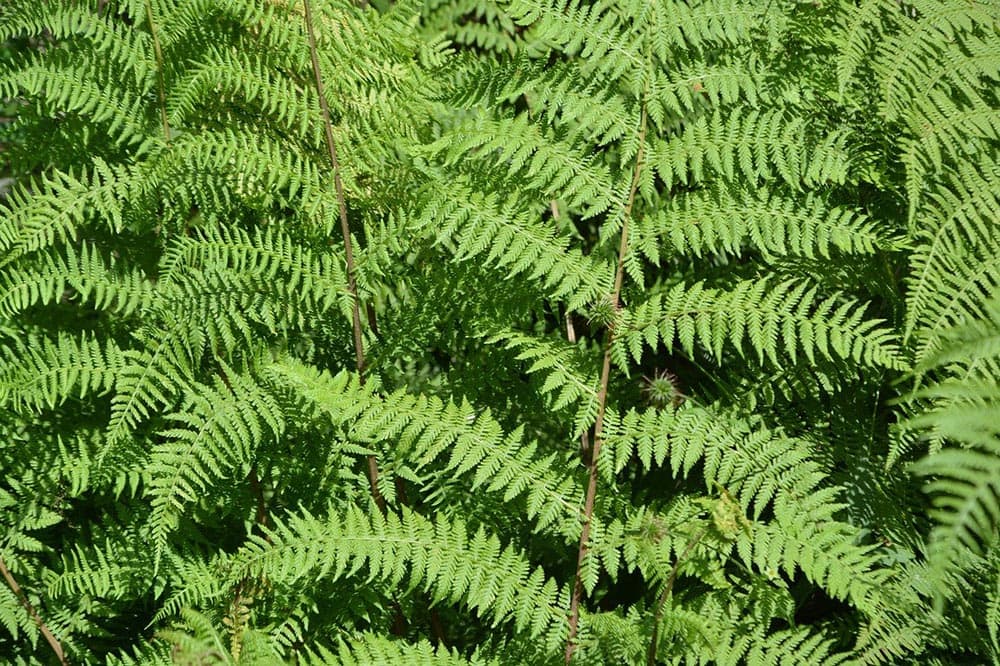
| USDA Hardiness Region: | 4–10 |
| Sun: | Partial shade |
| Soil: | Alkaline, well-draining, moist |
Many fern varieties make perfect companions for hydrangeas. Their lacy leaves make a great contrast next to colorful hydrangeas, making them a unique, vivid combination. Ferns typically thrive in alkaline, rich, well-draining soil and partial shade, which is something that also works for hydrangea plants. Before planting, choose the right fern species to get the most out of this companion planting combination.
If you choose the wrong variety, both plants might not reach their full potential.
- Great, unique plant combination
- Similar soil, light, and temperature preferences
- You need to choose the right fern variety for your hydrangeas
10. Sweet Potato Vine

| USDA Hardiness Region: | 9–11 |
| Sun: | Full sun/partial shade |
| Soil: | Rich, well-draining |
Sweet potato vines are annual plants that also make a great companion for hydrangeas. These leafy plants typically prefer full sun in contrast to hydrangeas, but their size will shelter your hydrangeas from the sun. Also, sweet potato vines grow stunning, small flowers and their leaves can have multiple colors, making your hydrangeas stand out.
Carefully choose hydrangeas that prefer warmer climates when planting sweet potato vines, as they need slightly warmer temperatures.
- They can shelter hydrangeas from the sun
- Their looks complement each other, making the hydrangeas stand out
- Sweet potato vines typically need warmer climates than hydrangeas
11. Japanese Maple
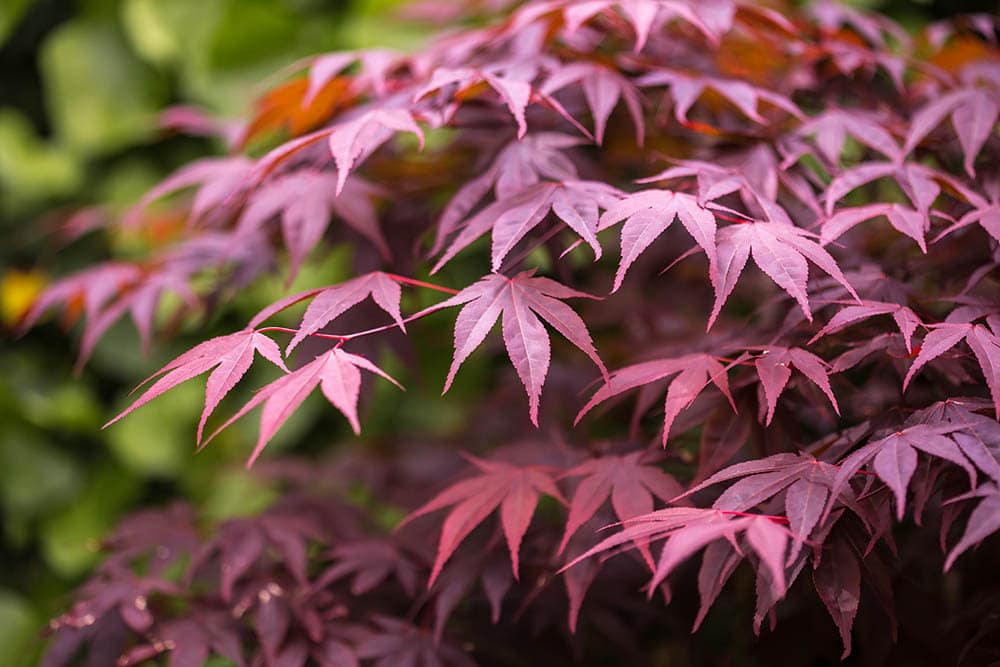
| USDA Hardiness Region: | 4–8 |
| Sun: | Full sun |
| Soil: | Moist, well-draining, acidic |
Japanese maples, as their name states, originate from Japan. These trees look beautiful all year round, making them a perfect option for planting next to hydrangeas. It’s also good that the Japanese maple requires a balance between sun and shade, similar to hydrangeas. When this tree becomes mature, it will provide enough shade for the hydrangea plants, which is also beneficial.
The only downside is that Japanese maples can take years before reaching their full size.
- Beautiful all year round
- Both plants have similar light conditions
- Once grown, mature Japanese maples will provide shade for your hydrangeas
- Japanese maples need years to reach maturity
12. Nepeta
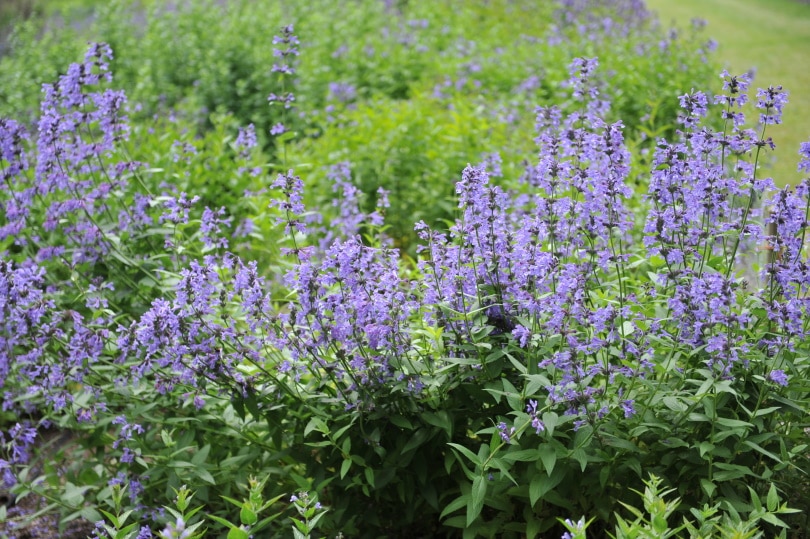
| USDA Hardiness Region: | 3–9 |
| Sun: | Full sun/partial shade |
| Soil: | Well-draining |
Nepeta, also known as catmint, is a perennial plant that originates from Europe. This plant has silvery, blue foliage and gets purple spike flowers throughout summer. As nepetas typically need higher temperatures than most types of hydrangeas, they won’t work well for all hydrangea species. However, they make great companion plants for a particular species—hydrangea paniculata.
Nepeta will attract positive insects and pollinators, which can further spread your hydrangea garden.
- They make good companion plants for hydrangea paniculata
- Not a suitable companion plant for all types of hydrangeas
- Needs warmer climates than most hydrangea species
13. Veronica

| USDA Hardiness Region: | 4–8 |
| Sun: | Full sun/partial shade |
| Soil: | Well-draining, loamy, acidic |
Veronicas are low-growing perennials native to Europe. During summer, these plants have white, pink, or purple spikes which fit the aesthetics of hydrangeas. The colorful spikes of this plant enhance the beauty of ball-shaped hydrangeas, making your garden stand out. Veronicas can grow in partial shade but prefer full sun, so they’re not compatible with all hydrangeas and typically go best with hydrangea paniculata.
- Good companion plant for hydrangea paniculata
- Not suitable for all types of hydrangeas
- Prefers more sun than most hydrangea species
14. Astilbe
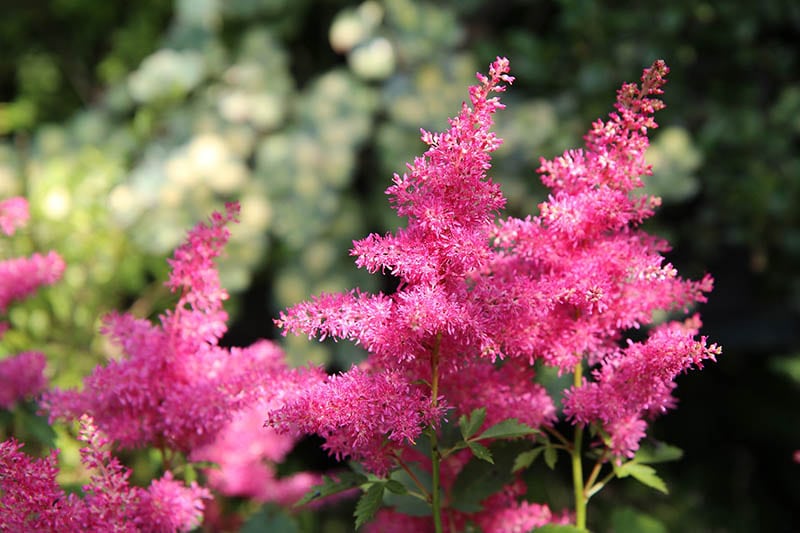
| USDA Hardiness Region: | 3–9 |
| Sun: | Full sun/partial shade |
| Soil: | Well-draining, moist, slightly acidic |
Astilbe is a perennial plant that provides a great contrast to hydrangea plants. These plants can thrive in partial shade, which also makes them compatible with hydrangeas. There are even astilbe varieties that can grow over 3 feet, which means they can provide additional shade for your hydrangeas. They come in various species with flowers of all colors, so you could truly make your garden colorful and vivid by combining these flowers.
- Both plants prefer shady conditions
- Colorful flowers will make your garden bright and vivid
- Some species can grow high and provide additional shade for your hydrangeas
- Astilbes need slightly more moisture in their soil
The Worst Companion Plants for Hydrangeas
While many plants go well with hydrangeas, there are also plants you shouldn’t keep next to these flowers. As hydrangeas prefer partial shade, many sun-loving plants are not the best companion plant choice. You should avoid planting many ornamental and edible plants next to hydrangeas, including:
- Lavender
- Sage
- Dahlias
- Cosmos
- Yarrow
It’s best to carefully verify what conditions the possible companion plant likes to determine if it’s a suitable choice or not.
Final Thoughts
There are a bunch of different options for companion plants for hydrangeas, so you can choose the one that suits your needs the best. If you’re using a plant that’s not on our list, carefully verify that it likes the same growing conditions as hydrangeas. As long as a plant likes partial shade and moist, well-draining, slightly acidic soil, it should work well as a hydrangea companion.
Featured Image Credit: Kapa65, Pixabay
Contents


